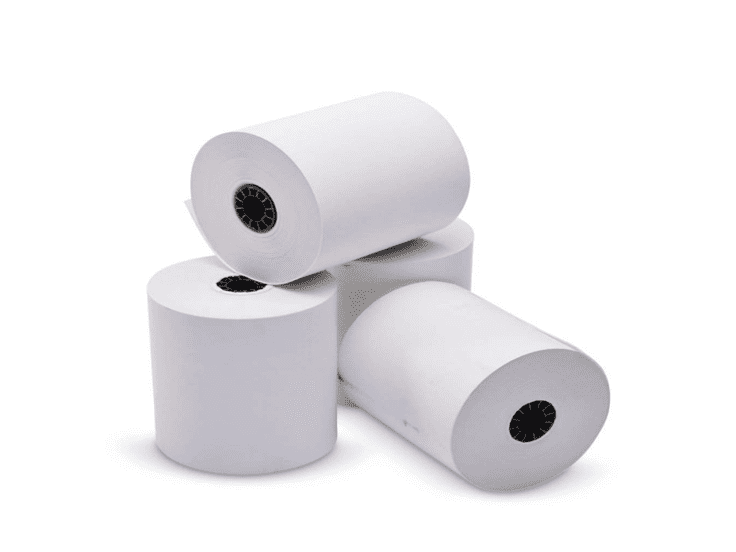Thermal paper is a type of paper that is coated with a special heat-sensitive material that enables it to produce images and text when exposed to heat. This innovative technology is widely used in various applications, including receipt printing, labels, and tickets. This article delves into the science behind thermal paper, its composition, printing process, and applications, while exploring the environmental considerations associated with its use.
What is Thermal Paper?
Thermal paper is designed to react to heat rather than ink, making it a crucial component in thermal printers. Unlike traditional printing methods that rely on ink or toner, thermal printing technology uses a thermal print head that generates heat to create an image on the paper. When the print head heats the surface of the thermal paper, a chemical reaction occurs, producing dark images or text.
Composition of Thermal Paper
The primary components of thermal paper include:
- Base Paper: This is the foundation of thermal paper, typically made from wood pulp. The quality of the base paper affects the overall performance and durability of the thermal paper.
- Thermal Coating: The thermal coating is a critical component that reacts to heat. It usually consists of a dye and a developer, which change color when heated. The most common color produced is black, but other colors can be used for specific applications.
- Protective Layer: Some thermal papers have an additional protective layer to safeguard the thermal coating from environmental factors like moisture and UV light. This layer can enhance the paper’s longevity and print quality.
The Printing Process
The thermal printing process can be divided into two main types: direct thermal and thermal transfer.
- Direct Thermal Printing: In this method, the thermal print head directly heats the thermal paper to create images and text. It is commonly used in point-of-sale (POS) systems for printing receipts and labels. The advantages of direct thermal printing include lower operational costs and fewer consumables, as there is no need for ink or ribbons. However, direct thermal prints are less durable and can fade over time, especially when exposed to heat, light, or moisture.
- Thermal Transfer Printing: This method involves the use of a thermal transfer ribbon, which contains ink. The print head heats the ribbon, transferring the ink onto the thermal paper. This process results in high-quality, durable prints that can withstand various environmental conditions. Thermal transfer printing is often used for barcode labels, product tags, and high-resolution graphics.
Applications of Thermal Paper
Thermal paper has a wide range of applications across different industries, including:
- Retail: Thermal paper is extensively used for printing receipts at checkout counters. Its quick printing speed and low maintenance requirements make it a preferred choice for retailers.
- Healthcare: In the healthcare sector, thermal paper is used for printing labels, charts, and patient records. Its ability to produce clear and legible prints is essential for accurate patient information.
- Transportation: Thermal paper is commonly used for printing tickets and shipping labels. It provides a reliable and efficient way to produce documentation for travel and logistics.
- Food Service: In the food service industry, thermal paper is used for printing kitchen orders, labels for food packaging, and receipts. Its resistance to moisture makes it ideal for high-humidity environments.
Environmental Considerations
While thermal paper offers numerous benefits, there are environmental concerns associated with its use. One of the primary issues is the presence of Bisphenol A (BPA) in some thermal papers. BPA is a chemical used in the thermal coating that has raised health concerns due to its potential endocrine-disrupting effects.
In response to these concerns, many manufacturers have started producing BPA-free thermal paper. These alternatives use different chemicals in the thermal coating, which do not pose the same health risks. Additionally, recycling thermal paper can be challenging due to its chemical composition, leading to increased waste in landfills.
To address these environmental issues, some companies are investing in research and development to create eco-friendly thermal paper options. These initiatives aim to reduce the environmental footprint of thermal printing while maintaining performance and quality.
Choosing the Right Thermal Paper
When selecting thermal paper, it is essential to consider several factors, including:
- Quality: High-quality thermal paper ensures better print clarity and durability. Look for papers that are resistant to fading, smudging, and environmental factors.
- Compatibility: Ensure that the thermal paper is compatible with your thermal printer model. Different printers may require specific paper sizes and thicknesses.
- Color Options: Depending on your application, you may want to choose colored thermal paper for added visibility or branding.
- Environmental Impact: Consider choosing BPA-free thermal paper or eco-friendly alternatives that minimize health risks and environmental damage.
Read also this article: Discover the Unique Style of Corteiz Apparel
Conclusion
Thermal paper technology has revolutionized printing by offering a fast, efficient, and cost-effective solution for various applications. Understanding the science behind thermal paper, its composition, printing processes, and environmental considerations can help users make informed decisions when selecting the right thermal paper for their needs. As the demand for sustainable solutions grows, the industry continues to innovate, providing options that balance performance with environmental responsibility. By staying informed about thermal paper technology, businesses and consumers can leverage its advantages while contributing to a more sustainable future.




